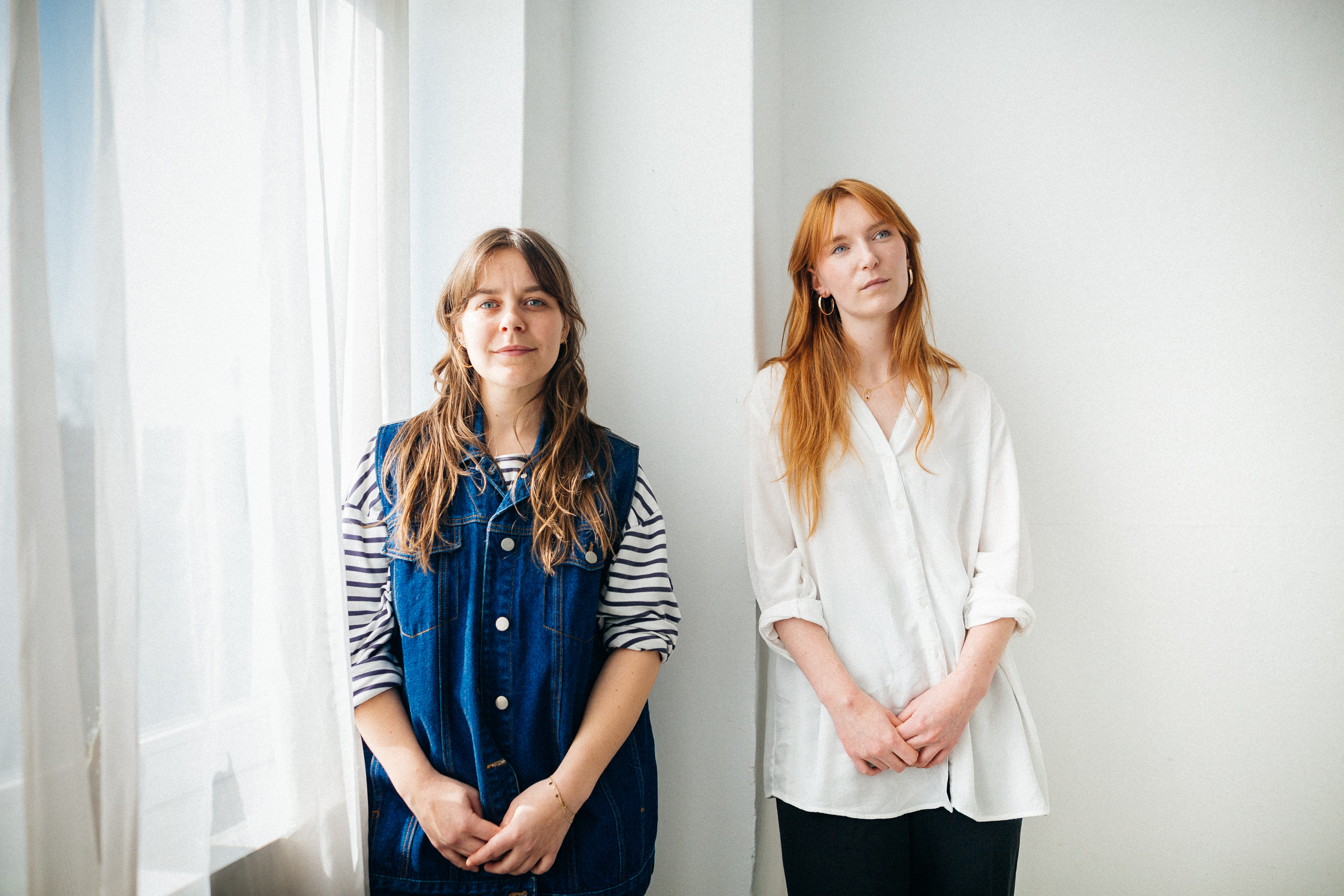
Interview | Liza Wolters en Raquel Vermunt
Liza Wolters (1992) and Raquel Vermunt (1993) are both visual artists with an eye for the still image. Last year they worked together for a month at the Hilton Art Lab; the former breakfast room of the Hilton hotel and an initiative of visual artist Herman Lamers. They spent days and nights in and around the hotel, wandering around and doing work on the spot, consisting of photography and video. During the working period, four exhibition moments were created in collaboration with artist friends.
Vermunt: 'We both have a cinematographic approach when we collect images. We work analog in our photographic approach and combine this with digital video image. As a starting point for the work period, we both decided to shoot a roll of black and white film in the same hotel room, right after each other, for which we both had 30 minutes. The outcome turned out to be very different, while you are in the same compact space. For example, Liza photographs very fragmentarily, in detail. My images are more reminiscent of film stills.'
How did you come up with the idea of not only exhibiting your own work, but also inviting others?
Wolters: 'This was the first time we worked together. We figured out who we both wanted to work with. In this way we offered space to others to exhibit. People could visit us during that period as if we were a gallery or shop, according to the guidelines in force at the time. We worked at a rapid pace on a presentation. It could then be visited by the public for one evening, sometimes two evenings, by appointment.'
Vermunt: 'It was in the middle of the corona time, it felt like an exciting statement: we have to make it anyway, why not on a large scale! We see the need to create together.'
Wolters: 'Many exhibitions have been canceled or postponed. It was special to see how many people came by, wanted to see work and meet again. It was striking how focused the discussions about the work were, precisely because it was also limited in terms of time and duration of the openings.
Did you already have plans for Refuge or did the arrival of PPR have something to do with it?
Vermunt: 'We had already started planning. We felt like executing the idea and the collaboration and looking for a form that was possible within the constraints. When PPR presented itself, we made an application. The great thing was that you could also apply for a project that was already running. That is often not allowed. We started, we knew what we needed. The speed with which the subsidy was awarded was very nice.'
Wolters: 'There were more short-term temporary schemes, for example from Stichting Droom en Daad. Subsidy processes are usually thorough and slow. For collaborations and manufacturing processes like ours, these arrangements have proven to be of value. The threshold to apply has been removed: there was no waiting time, you received immediate confirmation. That speed suited our way of working, which was very ad hoc.'
Vermunt: 'And it motivates, even if it involves small amounts. You can grow something, you can put extra time and energy into it, pay the people you work with and yourself too.'
Has this project influenced you in the long run?
Vermunt: 'I felt supported by Liza and vice versa. The speed of the work period was great: we made work and showed it directly. We kept our analog process going. The project has become a watershed in time: before Hilton or after Hilton. We have made a real step in our development with it.'
Both of your work has a certain stillness in it. To what extent did it fit with the times of lockdowns and the absence of people from public existence?
Vermunt: 'I am always looking for empty places where you can capture images. The empty halls of Theater Rotterdam also attracted me, for example. It keeps bubbling, that idea of working together on location. It changes your look. Now after two years of pandemic, so much has changed again.'
Wolters: 'The hotel was a crazy empty place in that bizarre period: I don't know if we could have arranged it now. In that period there were hardly any guests. We were therefore able to move freely.'
What is the significance of subsidies for artists? How does the system function as it exists now?
Wolters: 'It is understandable that committees need the time they need to deal with all the various project plans. They do their job thoroughly. However, I wonder whether the application procedure could not be made more accessible, so that the threshold for applying for grants can be lowered. An award or rejection is often seen as a value judgment. It is a test, while it is especially important that work can be realized. Subsidy appears to be a one-sided gift from the government to the artist. But in fact it is an exchange. It is not a cold transaction in one direction, from government to artist. Because something will come back. A government has the responsibility to continue to evaluate the subsidization process.'
Temporary work contribution PPR
Om artists during the corona lockdowns to help maintain their professional practice, launched CBK Rotterdam de Ttemporary Wacknowledgment Production, Presentation en Research (PPR) about this visual artists can are signed up at CBK Rotterdam. Divided into two rounds in 2020 in 2021 finally received bijna two hundred artists a contribution. The result of the temporary work contribution is bundled in a publication in which we, together with a few artists, look back and look forward. This is one of fifteen interviews from the publication.
Text: Machteld Leij
Photo: Mark Bolk